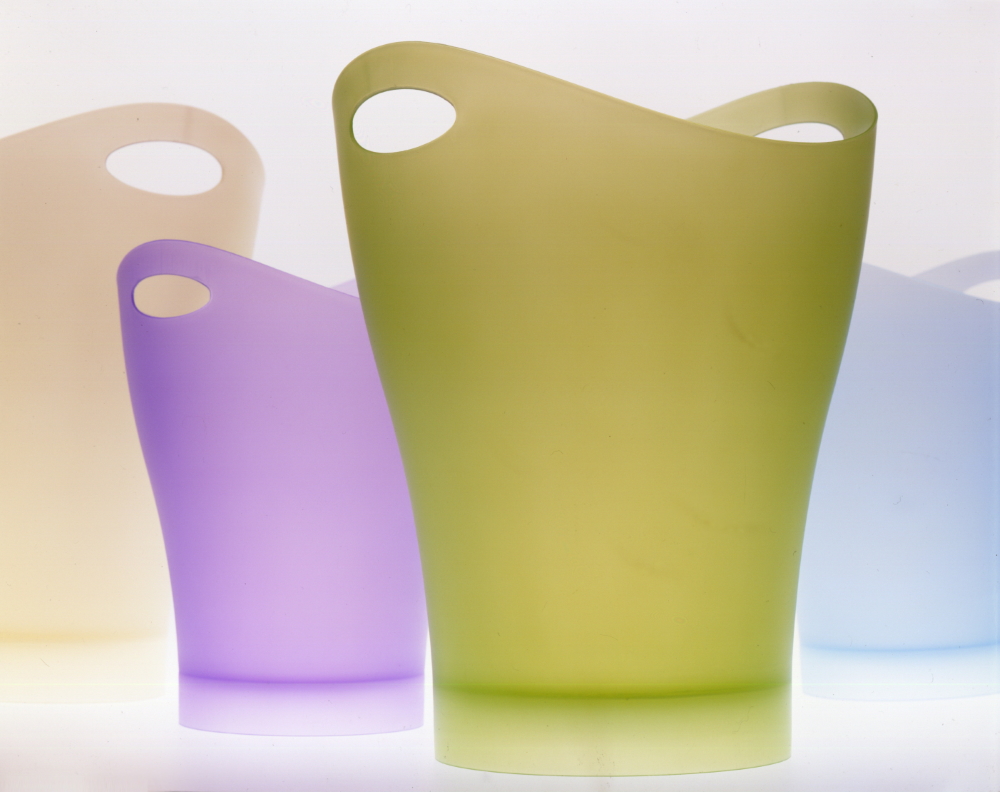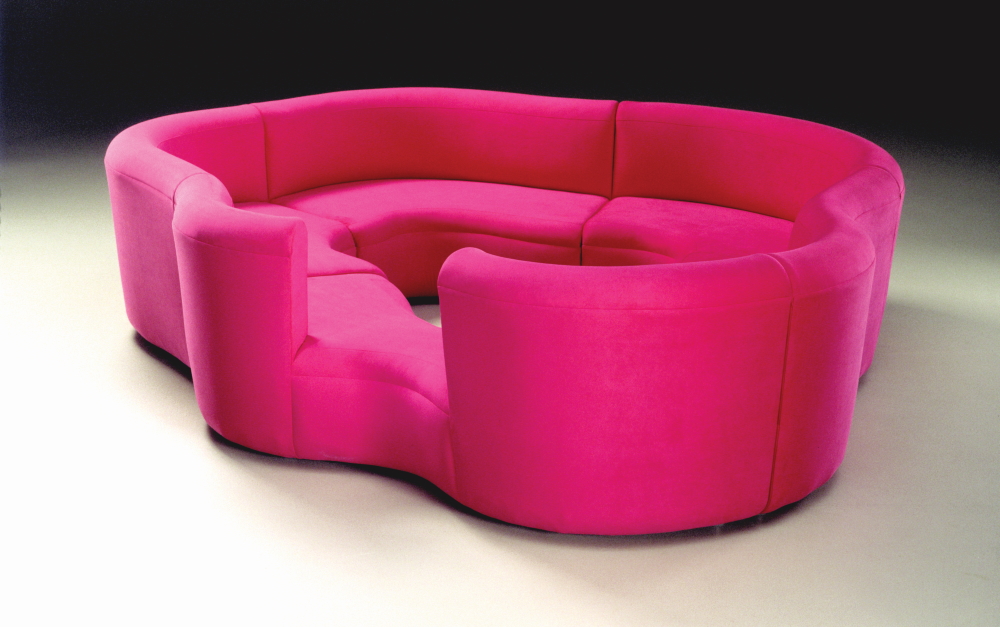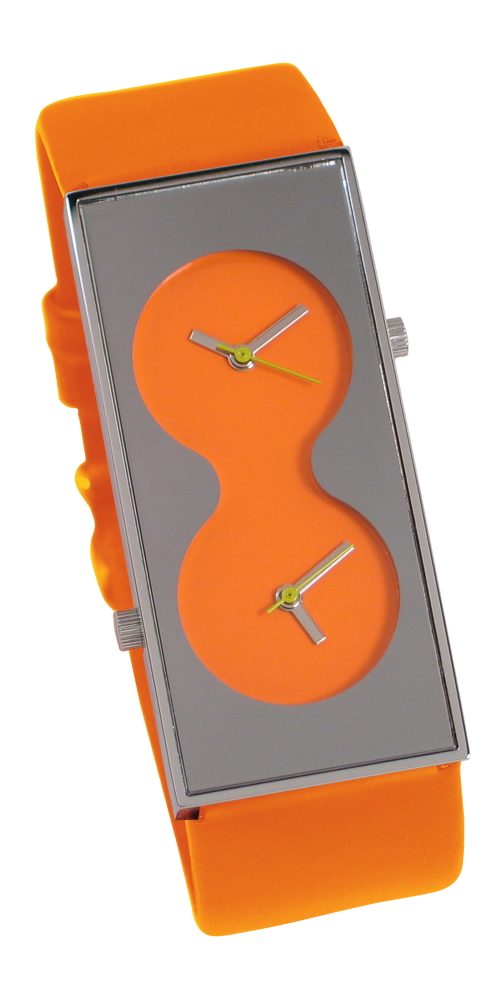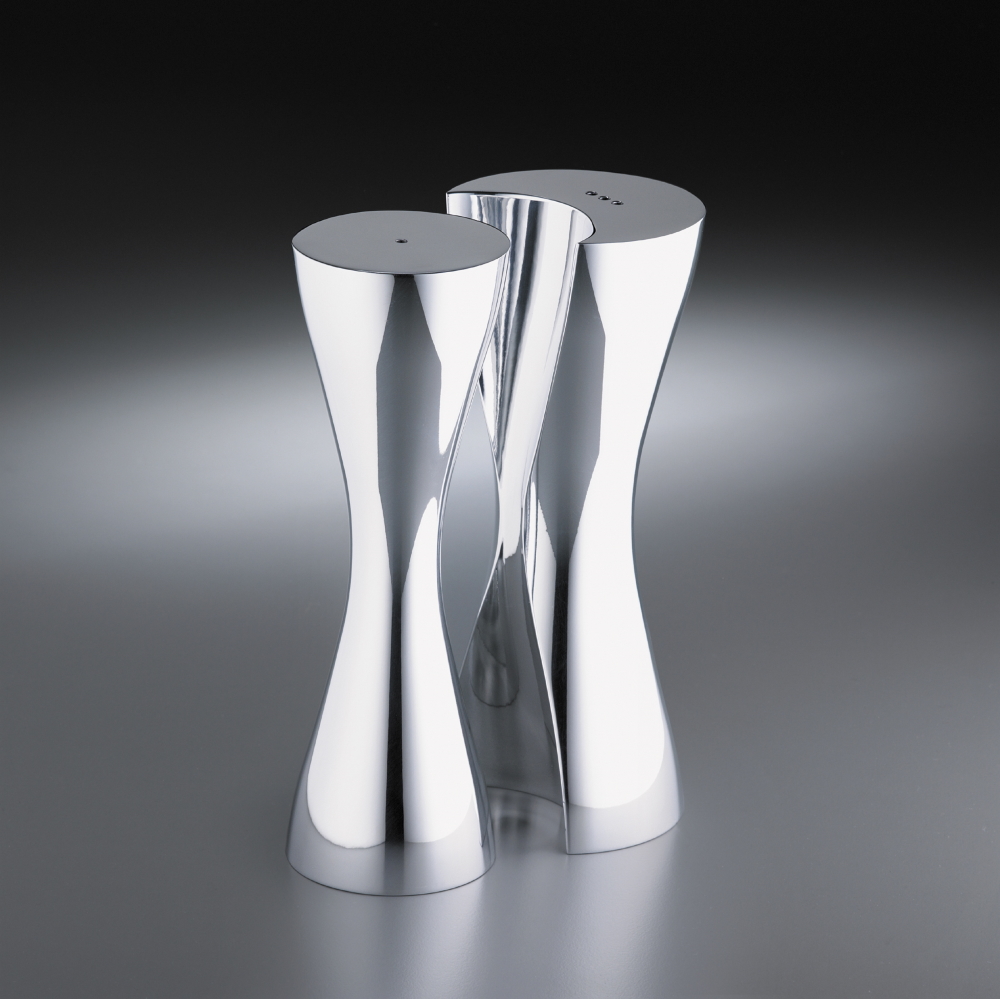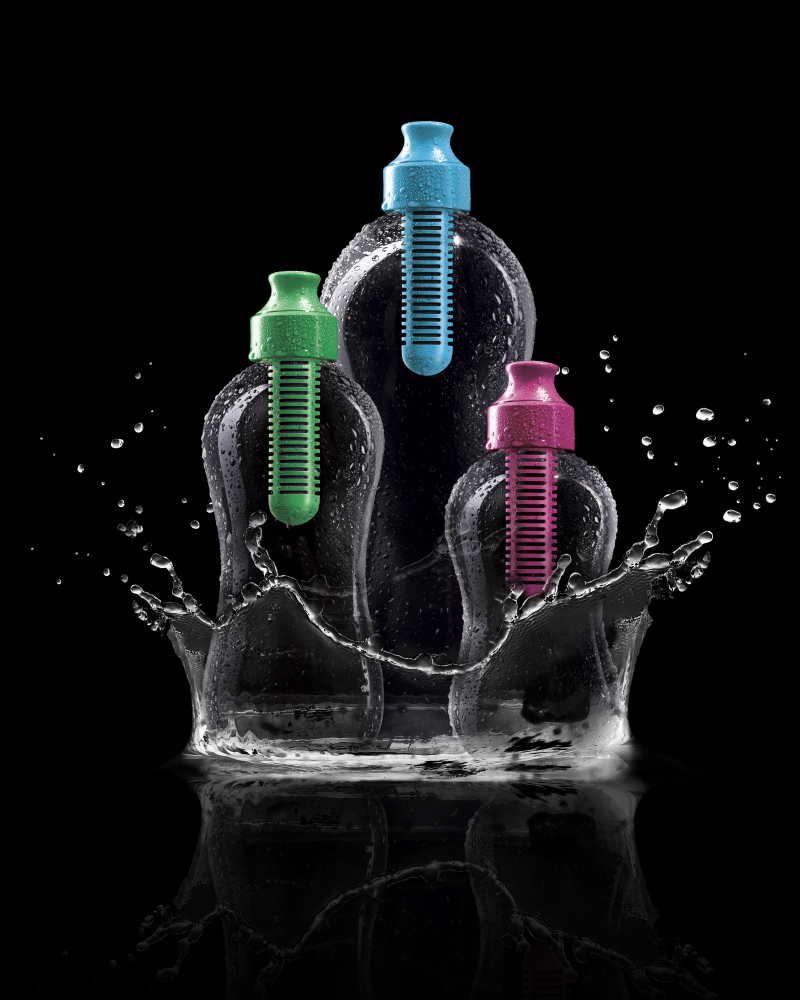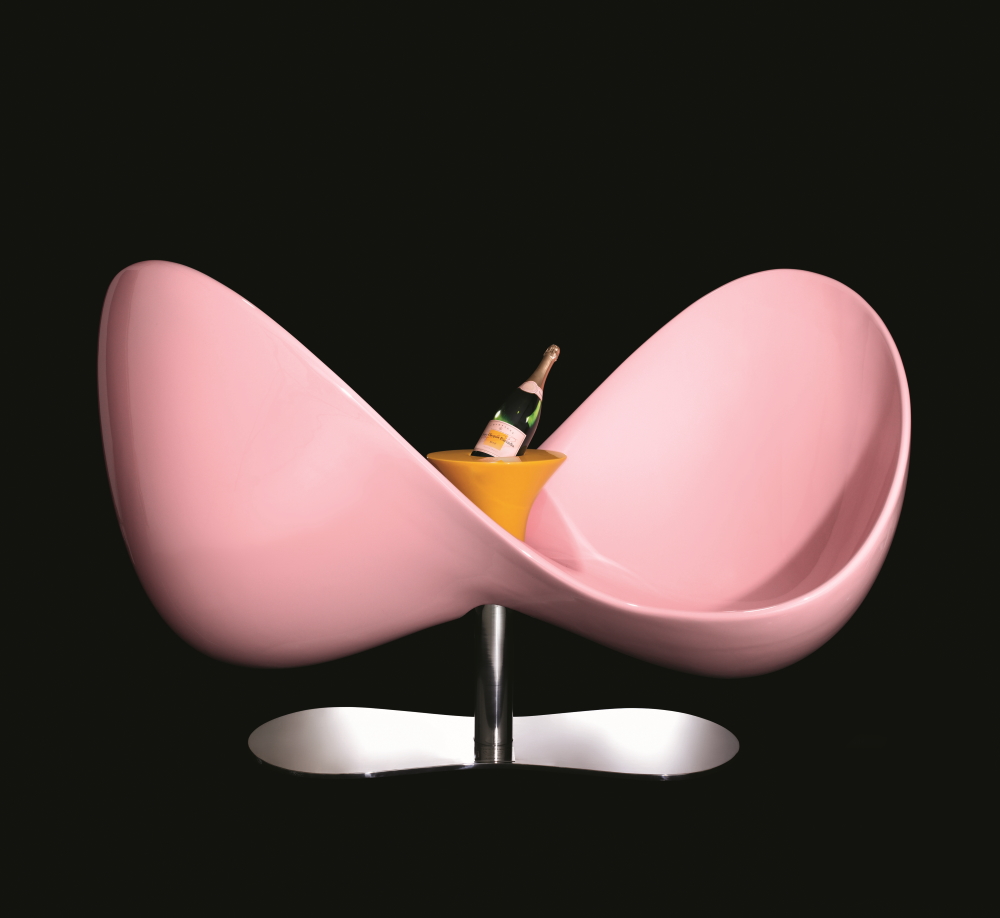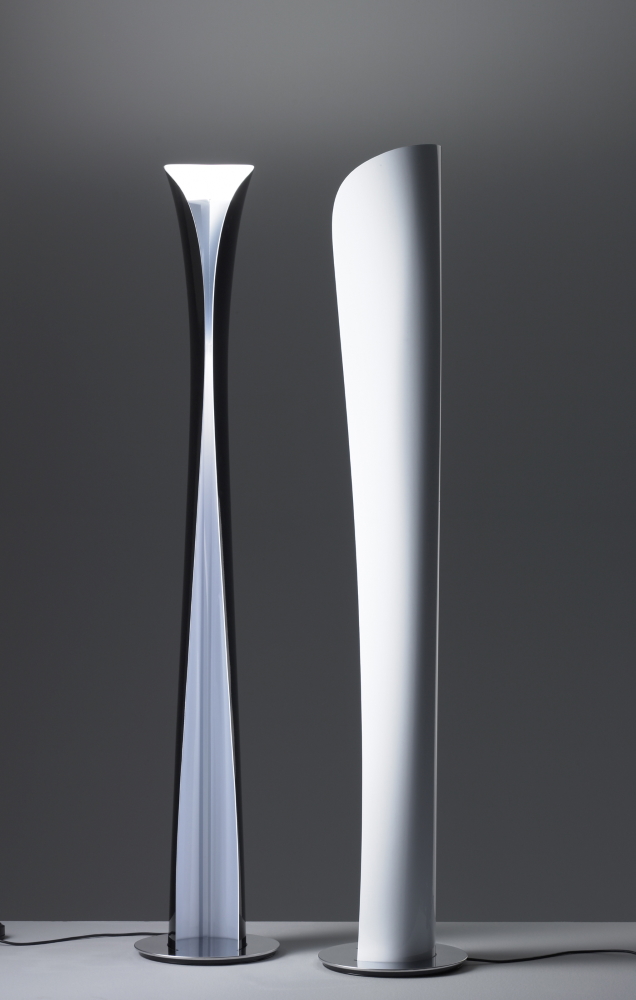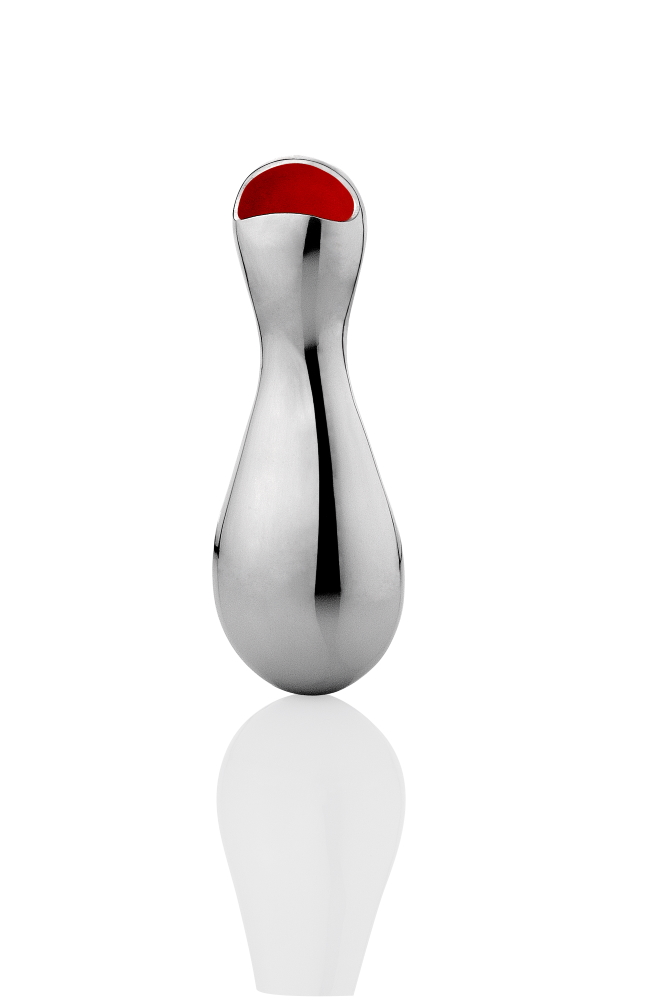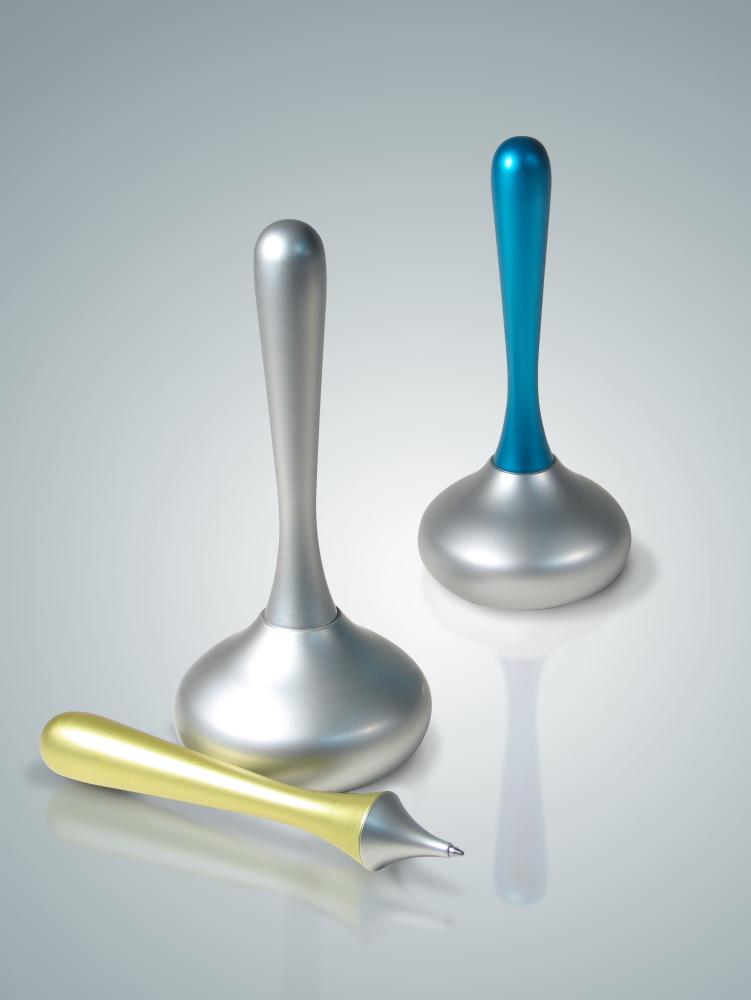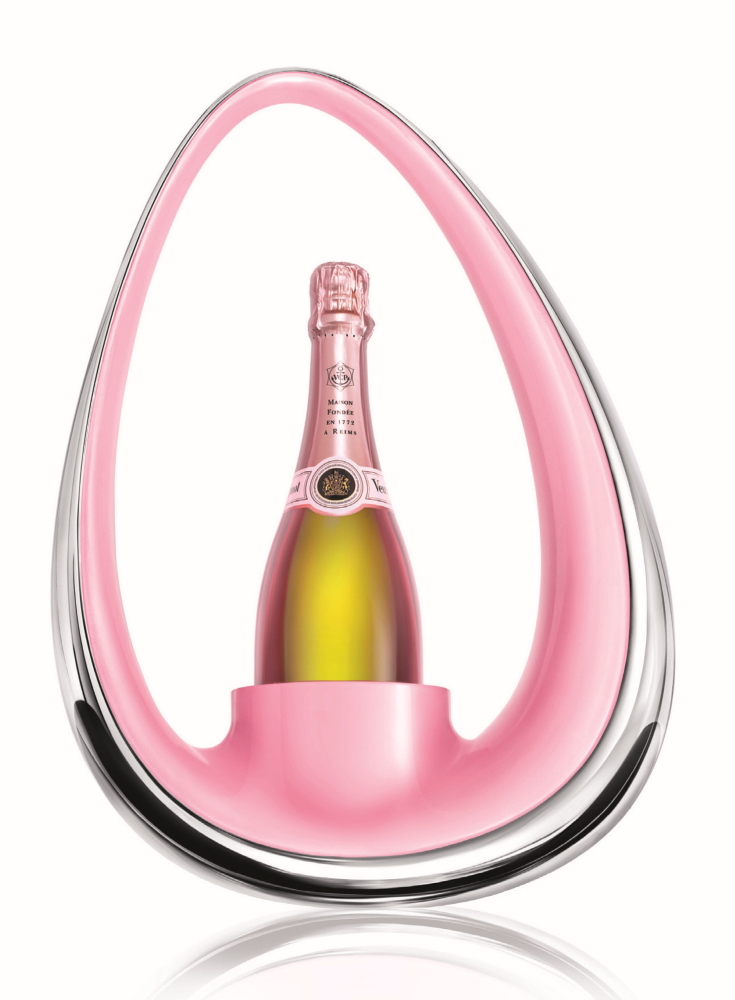Karim Rashid
famous product / industrial designer
Egypt / US
Over seven million people have bought his super-seller, the inexpensive plastic paper basket Garbo Can. The design classic was created by Karim Rashid in 1994. He is not only “THE most famous industrial designer in all America” (TIME), but also one of the most successful, important, prolific and influential ones of our time. Moreover, the "Prince Of Plastic" (New Yorker) is considered a pop star of the industry.
Karim Rashid
famous product / industrial designer
Egypt / US
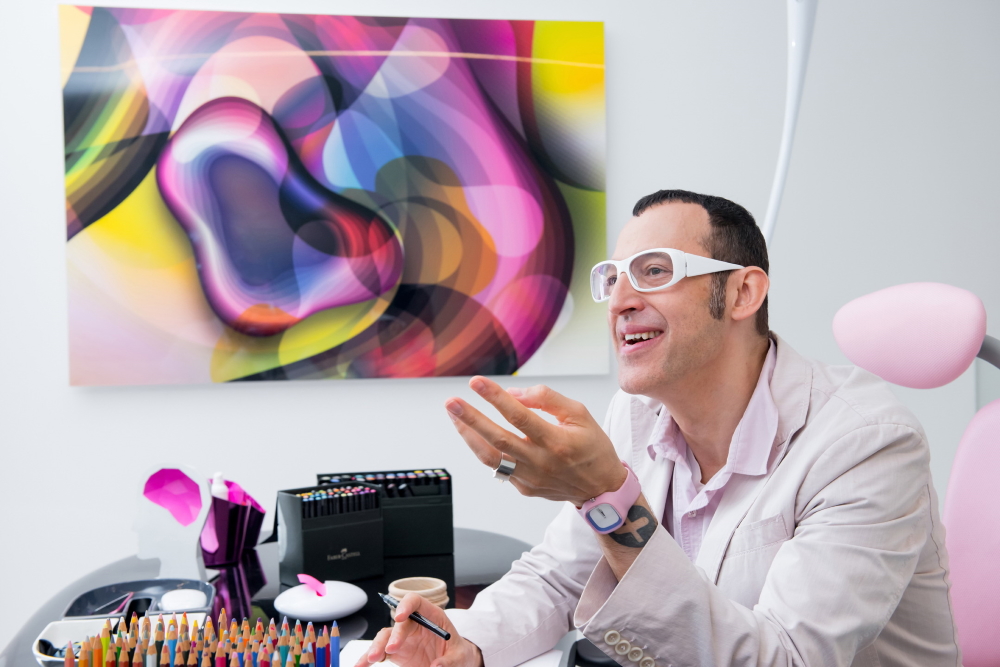
The son of Egyptian-English parents was born in Cairo on 18 September 1960, grew up in Canada and studied industrial design there. Through his own design studios in New York and Rotterdam, the company bearing his name is active in more than 40 countries - among others for the global brands Alessi, Giorgio Armani, Artemide, Audi, Citibank, Davidoff, Tommy Hilfiger, Kenzo, Yves Saint Laurent, Estée Lauder, Ralph Lauren, Prada, Sony, Swarovski, Toyota, Unilever, Villeroy & Boch, Veuve Clicquot, Yahoo.
The huge portfolio of Karim Rashid, who - according to his own statement - "wants to redesign and reinvent the whole world" and loves round shapes and often gaudy colours in his creations, includes articles from almost all areas of life: from the hoover 'Kone' to the stacking chair 'Oh Chair' (edition: two million pieces) to precious metal tiles in seven different shapes for the Australian manufacturer Alloy. Furthermore, perfume bottles and packaging from Issey Miyake (L'Eau D'Issey - D'Ete Lune, For Him: 2 in 1), wallpapers commissioned by the German company Marburg Wallcoverings, the exclusive household appliance series of the Slovenian LivingKitchen manufacturer Gorenje, a nail varnish series for men (Faby Nails), the Morphescape service, a manhole cover, the chess set made of acrylic or cyber couture that adapts its colour to body temperature. Furthermore, the four-language fast talker (Arabic, English, French, Italian) is responsible for the interior design of the award-winning sushi restaurant Morimoto (Philadelphia), the Powder Club (New York), the hotels Semiramis in Athens, Prizeotel (Hamburg), nhow (Berlin) and the Munich erotic lifestyle shop Fun Factory.
According to the Philadelphia Museum of Art, Karim Rashid is one of a handful of contemporary designers whose work has had a lasting influence on 21st century design. This assessment is supported by the 300 design awards the hyper-creative designer (over 3,000 products since 1993) has received to date. His work is exhibited internationally in renowned galleries and major museums such as the Museum of Modern Art (New York and San Francisco) or the Centre Georges Pompidou (Paris). The design dandy, who has been dressed primarily in white (sometimes with a little pink) since 2000 and whose creations combine "functionality with sensual minimalism" (self-judgment), calls his individual style "Blobism - the world is a bubble". Several honorary doctorates additionally qualify the associate professor of industrial design as a guest lecturer at universities and conferences. Karim Rashid is also active as a book author (including "evolution" and the programmatically titled monograph 'I Want To Change The World'). In his rare free time, the member of the Interior Design Magazine Hall Of Fame spins in clubs under the pseudonym DJ Kreemy.
Karim Rashid is married to the Serbian chemist Ivana Puric. The couple lives either in Manhattan in around 250 square metres in a nondescript high-rise or in Miami/South Beach (US).
Interview September 2015
“Sensual design”: shaping the future and beautifying the world
ABOUT INSPIRATION & INTUITION
The Romanian-French sculptor Constantin Brancusi said about his creation process: “Things are not difficult to make. What is difficult is, putting yourself in the state of mind to make them.“ Before the creativity, there is intuition. Where does this intuition come from, what sparks it? How does it manifest itself – is it only a vague idea or tangible (for example, in pictures)?
Intuition is based on all of one’s experiences and knowledge. Hence when I think I am intuitive my mind is actually processing years of accumulated information. Of course inspiration is different than intuition. Inspiration is a direct conscious reasoning based on a fact, image, discussion, word, etc.
Is the timeframe of intuition only temporary or can it be supported by external factors? Inspiration is supported by external factors, intuition is based on internal (conscious versus sub-conscious).
I think those personal factors for inspiration and intuition are very personal. For me it is constant change. I rearrange my home and office so frequently. I change artwork, objects and furniture between my home and office depending on what new samples I receive. I love this sense of change and constant newness. I call it chronic progress.
How important is the own physical constitution? Is it true that sadness equals creativity (or vice versa?) To quote the writer Miller Williams: „The saddest joys are the richest ones.“
I think dissatisfaction leads to creativity. But not sadness. I believe that sadness is an old cliché of the suffering artist and I don’t believe an artist needs to be sad depressed, starving, or otherwise to be creative in fact an artist can be in a positive happy environment and be far more creative. I am constantly looking at the world around me and critiquing objects, seeing how they could be redesigned. I am motivated by my desire to beautify the world through design. Design is about progress, about moving us forward, about challenging and elevating the human spirit. We should be conscious and sensorially attune with this world in this moment.
Which place/what environment is best for the creation/work process?
I think it’s important to live with my designs. I live the life I preach about – from the objects that surround me, the choices I make from how I travel to what I eat & how I spend my free time. All my homes are mostly my work but with paintings of artists I love that inspire me. I learn every day from it. Picasso surrounded himself with his work so that he can immerse himself in finding his true meaning, to transpose that experience onto the world.
What, if there is a deadline, but no intuition?
I am constantly looking at the world around me and critiquing objects, seeing how they could be redesigned. I have never had ‘writers block.’ I have more ideas than companies could ever produce. I perpetually observe and analysis and dissect everything around me in our built environments. I think, observe, and sketch profusely and constantly. I am motivated by my desire to beautify the world through design.
Prior to intuition is inspiration the primary catalyst? If so, what inspires you?
Inspiration comes from this ever-vast yet shrinking world in which we live. I find inspiration to be accumulative (a total of my years of designing), there’s always a storm of ideas and influences that come into play. Inspiration is accumulative. Everything can be inspiring. It is how you look at the world. I am inspired by my childhood, my education, by all my teachers I have ever had, by every project I have worked on, by every city I have travelled to, by every book I have read, by every art show I have seen, by every song I have heard, by every factory I ever toured, by every design I have ever seen, by every smell, every taste, sight, sound, and feeling….
According to Philip Roth, “amateurs wait for inspiration while professionals sit down and work.” How do you feel about that?
I am not happy unless I’m busy. Work is Life. I always said ' make your hobby your job' then you will be truly happy and contribute more to this world. I don't think of life as 'work' versus ‘fun’ I just see it as bringing meaning to one’s life. But I also stay relaxed by working out every day, drinking and eating raw organic foods, sleeping 8 hours a night, and frequently getting massages.
How do you separate the good from the bad; how do you know which ideas to explore further, which ones are maybe even ahead of their time, visionary ideas and which are not?
I think anyone who is somewhat intelligent knows a good idea or concept form a bad one. If not, I my staff, or my spouse, or a friend, or even my Facebook fans.
Which key criteria does the idea need to be viable?
All ideas are viable. It’s about loving what we live with. Today especially, design must prove its worth and address the inhuman built environment to give us elevated, more pleasurable, more qualitative, aesthetic humanized seamless conditions.
Do you write down an idea right away, because you might forget?
When drawing it is usually something have envisioned before, but am just bringing it to life on paper.
Do you feel if an idea has the potential to be something big?
Yes, always I can sense that. I am not always right though because design is dependent far more than just the design itself for success.
How long do you ponder an idea before creatively working on it?
I don’t. I work immediately on it before I forget my initial ideas. They are always the best.
ABOUT CREATIVITY
According to novel-price-awarded author Nelly Sachs “everything starts with yearning.” Do you agree?
Absolutely! I’m driven to create a better world. Design is about helping someone live a better life. Design is about moving us forward, about new technologies, new materials, new behaviors, greater function, higher performance, and a betterment of society. SO much of the world is poorly designed and screaming to be remade! But evolution and growth should be organic and constant. So eventually those ugly houses will be replaced by beautiful solutions.
Is it magic and fun or torture/blood, sweat & tears to be creative?
It is Magic & Fun to create. It is Sweat & Tears to have it manifested and disseminated in the world.
What is the process like from theory/idea to a practical creation?
I always give the advice: Be smart, be patient, learn to learn, learn to be really practical, but imbue poetics, aesthetics, and new paradigms of our changing product landscape. You must find new languages, new semantics, new aesthetics, experiment with new material, and behavioral approaches. Also always remember obvious HUMAN issues in the product like Emotion, ease of use, technological advances, product methods, humor, and meaning and a positive energetic and proud spirit in the product. This is what is missing! Many products have a very short shelf life, and they must capture the spirit of the time in their product lines and not worry about looking, behaving, performing like everyone else.
Can you force creativity? Are „drive“ and efficiency counterproductive?
Yes of course. I know many successful artists that go to their studio at 9 am like a job and work. Once they are in that environment they become productive and creative.
How do you stimulate your creativity/are there specific rituals therefore or a muse?
Muse is bullshit.
Which is better for creativity: discipline and structured time-management or idleness?
Discipline! I work very quickly. If you spend too long on an idea or a project it loses its life, its spirit.
Does age and life experience help with creativity or is a younger mind more creative, because it is fresh and untouched by experience? Does age equal more creativity? What about social / cultural heritage?
Every finger print is different; every child is born and immediately creates originality and personal expression. Sadly collective society for centuries has suppressed creativity (and this has gone on too long), but we are finally understanding that if we were all creative as children, we all have the creative capabilities for our entire lives, and as we grow older we could be encouraged to constantly be pro-creative. We could be living in a far more poetic human beautiful world, and one day all of us will all be able to leave our mark, our 'creative' fingerprint on the ever-vast changing world. this is only the beginning of liberalizing all of us to express our individualism.
How important is talent for creativity? Is art of any kind based on talent?
Talent, hard work, perseverance, and consistency is the way to succeed. I have always been driven to create and speak about design and the world we live in. In fact I think it happened because I am so passionate and this comes through in my writing, my interviews, my lectures, my press conferences and my projects. I'm contributing as much as I can while I am on this planet.
Do you archive certain ideas to maybe check back when you are in a less creative phase?
No, I am always creative – but I can pull from previous ideas when the opportunity strikes. I’ve had lamps and chairs that were ideated when I was in university and not produced for another 20 years.
Did you ever revisit an older idea, that you thought would be worthless but it turned out to be great/good? If so, why do you think that is?
Yes. In fact three years ago at the age of 51 i showed a sketch to ‘Artemide’ for a floor lamp design from when I was 19 years old in university. They produced it and it is a phenomenal success.
Is it better to be creative on your own, only trust your own instinct, or in a team? However, in a team - how much of your own, personal idea is really left afterwards?
I think it is important to trust one’s own instinct and let the creative team expand upon one’s original idea.
Is it true talent to trust other people to fill the gaps of your own deficits/ lack in creativity to produce something significant/great?
Maybe. I can’t answer this because I have ideas constantly, and rarely rely on others creativity to help my work.
Who’s leading in the creativity-process: craftsmanship or spontaneous intuition/inspiration?
Craftsmanship is so far from inspiration. It is steeped in age old traditions that take lifetimes to learn and change. I am more interested in spontaneous inspiration and the speed at which we can see these inspirations come to life with technology.
Which roles play aspects such as sincerity, authenticity, self-doubt when it comes to creativity and are they useful for the creative process?
Could be all of them or none of them. For me it is search for the original. If I am original. I did something that 300 billion people never did before in history. That is inspiring enough to find one’s personal soul and create. It also gives meaning to one’s life.
If you would make a pie chart: How are emotion, mind and commercial interests split in percentages when it comes to the creative process?
They are evenly distributed. The criteria is based on the project, the intended use, the emotional needs and desires I want to imbue, as well as issues of budget.
Which is better in a developmental process: speed, meaning to grasp the magic of the moment, or a slow, ripening process when it comes to implementation and elaboration?
Speed!
What is the individual satisfaction based on: a) self-realization and individual fulfilment b) the (artistic) recognition or c) commercial success?
Self-actualization.
What is your personal motivation for creative activity?
My motivation focuses around our conscious collective memory and a desire to fill it with ideas that are seamless between art and life. Beautifying the world, and creating well designed, provocative, stimulating yet calming environments is the impetus for everything I embark on.
What role does perfection play when it comes to creativity?
Is a completely perfect opus soulless? Absolutely! Perfection is subjective. I constantly strive for my own perfection. My designs are a manifestation of my soul, like a composer creating music.
How much does routine influence creativity?
I don’t subscribe to a routine, but prefer to work quickly on many projects one after the other.
Can experience and professionalism make up for lack of creativity? And if so - how much?
Yes. In fact I believe that in commercial creative friends (it is easy to be complement) requires less creativity to be successful.
How is it possible to stay true to yourself artistically, but stay innovative at the same time? Can you keep re-inventing yourself without renouncing/denying your style?
Conservative thinking will not help your growth, but instead cause a sort of metooism. You must each separate yourself from others.
People see me in one vernacular then think it’s all I can do. I am not just a pink 'blobmeister'. My design language is always evolving and changing depending on the subject matter, depending on the typology, depending on the brand, depending on the best solution for the specific project. There are artists like Rothko who did the same canvas all their lives, and then there are the Picassos that need change perpetually – I have a need for change and experimentation.
Is it desirable to be ahead of your time or does it cause to be misunderstood (or not understood at all)?
You must be original and ahead of your time. I do not follow or believe in trends. Designers can only be holistic and comprehensive if they are able to be rigorous about finding their own unique position in the built environment. They need to address all the issues of a given project and create original products, spaces, and an original identity.
ABOUT SUCCESS
Is there a rule for successful artistic work, an individual prototype for success? In short: Is success projectable?
I have learned that many designers do a great deal of work but it remains in concept form only because the key to putting designs on the market is to make sure it is a collaboration. If you work closely with a client and understand their needs, you can be much more productive. I have had too many failures and have learned that design is a collaboration between one brand and my brand and one must listen, and work within that culture or nothing will go to market or get built.
When something is successful, how big is the temptation to recycle it, to repeat the successful prototype and not develop further?
There is a fine line between finding your aesthetic and recycling an idea. But if you are always striving for originality, I think, you will be successful. With most of my work my approach is to design, meaning to develop a better human experience and or contribute originality and something relevant and smart to evolve humanity. The problem that we face as designers is that more than often we are asked by clients to restyle things, not design new things.
Should you be able to predict characteristics, needs and desires of your potential audience to be successful?
Yes of course. In design one must act somewhat selfless sometimes. I always say they are selfish, designers are selfless.
How do you stay open to critique despite success?
50% of the design community hates me. But I could not care less, because I know I am doing better for this world.
Do you have to be driven, do you have to be addicted to achieve the next time, what didn’t work this time?
Yes, one must be self-driven.
How big is the fear of failure, that a successful run might end and what follows is the fall?
It depends on the failure what lesson you take from it. I have had too many failures and have learned that design is a collaboration between one brand and my brand and one must listen, and work within that culture or nothing will go to market or get built. I realize that we live in a very complex world, and it can never be a utopian singular vision, and I'm just contributing as much as I can while I am on this planet. I have also learned that many designers do a great deal of work, but it remains in concept form only because the key to putting work on the market is to make sure it is a collaboration.
In your mind, what is the reason for being successful over a long series of time and all of a sudden the success is gone? Is this a matter of the contemporary taste and different times or is it just a natural development that once one is on top for some time, there’s only one way - down?
I see that design is becoming easier and easier to produce without designers, so fewer designers will prevail. The ease of software, or copies, of variations will separate the good from the bad, and (like what happened with desktop-publishing to the graphic world) this will happen to the 3-d- and -architecture-world. Less design architects, but better architects; less designers, but better designers.
How do you deal with failure? Is it important to have perseverance because success might come later on?
Absolutely! I have had too many failures and also many successes. When I started my office, after approaching about 100 companies from ‘La-Z-Boy’ and ‘Coca Cola’ to ‘Gillette’, and I only got one client, ‘Nambe’ in Santa Fe, New Mexico. It took so much perseverance and so many rejections before I was able to make a dent in the design world. And even now I face many obstacles whether its clients not following through with a project, designs being too ahead of their time, etc.
How do you deal with a moment, where your individual, perfect work has been created, maybe has been praised and nominated with all possible awards – what will be next? Or is the personal peak also “the end”?
For me there is no personal peak. And accolades do not mean much to me anymore. They mean a great deal when one starts their career and rightfully so.
If this is a possibility – is it even desirable to create the ultimate, perfect work?
Yes, it is the driver to one’s continuance.
MY FAVORITE WORK
“I am so proud of the 'Garbo Can' for 'Umbra' that I designed in 1994. 'Umbra' have sold millions globally and proved to me that Americans want design but at an affordable price. At that time the ubiquitous plastic wastebasket on the market was a rectangular black can with absolutely no character and there was little alternative. I immediately thought about a more sensual object, an object that is wider at the top than the bottom to peak semantically about a mouth for garbage, and then raised handles in order to make it function better. It can be artistic, conceptual, but must always function perfectly.”
